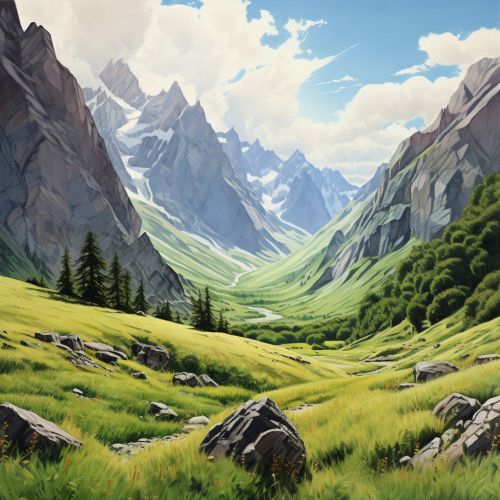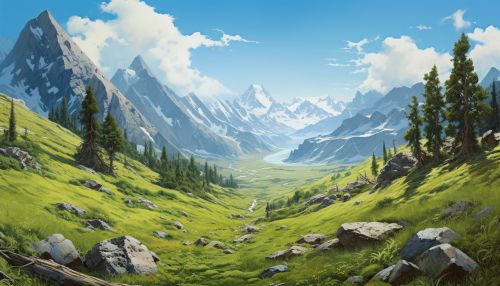Recessional moraines
Introduction
Recessional moraines are a type of moraine that form at the terminus of a glacier at a point where it remained stationary for a sufficient period of time to produce a deposit. These moraines are often observed as a series of transverse ridges running across a valley behind a terminal moraine. They represent stages in the retreat of a glacier, offering valuable insight into the glacier's history and the climatic conditions that influenced its movement.
Formation
Recessional moraines form when a glacier pauses during its retreat. This pause allows the glacier to deposit the rock debris it has been carrying. This debris, known as till, is a mixture of sizes, from fine dust to large boulders, which the glacier has scraped and plucked from the valley sides and floor as it moved. When the glacier retreats further, it leaves behind a ridge of this till. Each pause in the retreat of the glacier can create a new recessional moraine.


Characteristics
Recessional moraines are often seen as a series of small, parallel ridges running across a valley. The ridges are usually made up of unsorted, unstratified till. The size and shape of the ridges can vary greatly, depending on factors such as the amount and type of debris carried by the glacier, the length of time the glacier paused, and the topography of the valley floor.
Examples
There are many examples of recessional moraines around the world. In North America, notable examples can be found in the Glacier National Park, where they provide evidence of the retreat of the glaciers at the end of the last Ice Age. In Europe, the Jostedal Glacier in Norway has left behind a series of well-preserved recessional moraines.
Importance in Geological Studies
Recessional moraines are of great importance in geological studies, particularly in the field of Quaternary science. They provide valuable information about the history of glaciers, including the rate and pattern of their retreat. By studying these moraines, scientists can gain insights into past climatic conditions and the impact they had on glacial movement.
